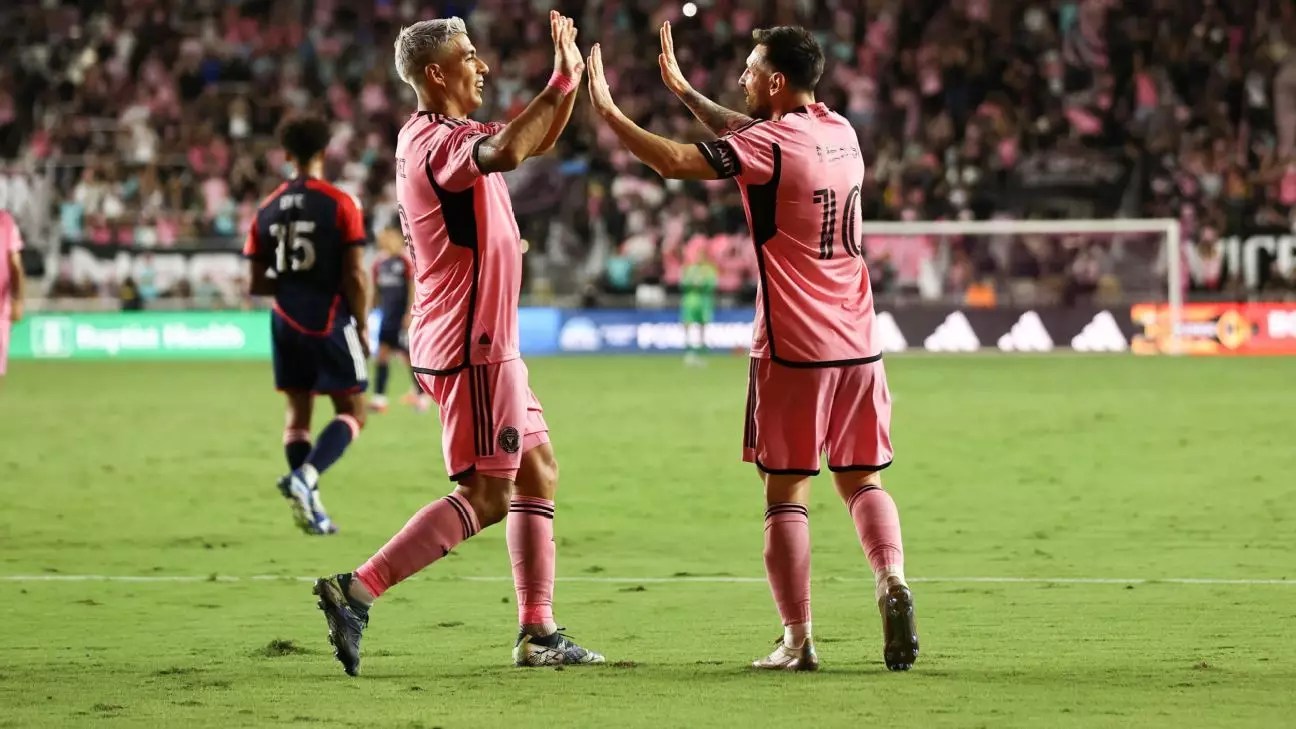Inter Miami’s triumph in clinching the Supporters’ Shield was not solely the result of Lionel Messi’s stardom or the presence of other football legends. While Messi’s contributions were undeniably significant, the narrative of the team’s success inevitably pivots towards the supporting cast, whose efforts often go unnoticed in the shadow of marquee names. Jorge Mas, the managing owner of Inter Miami, stood on Lower.com Field, basking in the validation of extensive efforts behind assembling a competitive team. His smile as the final whistle blew in their victory over Columbus Crew encapsulated a season defined by collective resilience and strategic brilliance.
The excitement surrounding Messi’s arrival at Inter Miami was palpable, promising a revolution in Major League Soccer (MLS). However, the reality of their historic season showcased a deeper truth: it took a well-rounded, cohesive team to not only contend but conquer within the league. While Messi led the league in non-penalty goal contributions, his frequent absence due to injuries and international duties meant that the team needed to evolve beyond star power. Mas emphasized this point, highlighting the sacrifices made by the entire squad, stating, “It’s a team effort.”
Luis Suárez was pivotal in this narrative of perseverance. Tied for the most non-penalty goals in the league, Suárez’s performance was notable not just for the raw statistics but for the context behind them. Nearly half of his 20 goals came without Messi on the field, proving his ability to stand out independently. Coach Gerardo Martino proclaimed Suárez’s overall game to be influential beyond mere numbers, shedding light on his intelligence and work ethic on the pitch.
In addition to attacking prowess, the defensive backbone of the team was critical this season. Sergio Busquets, a stalwart in the midfield, provided the necessary foundation that allowed attacking talents to flourish. Metrics indicate that Busquets added immense value to the team’s ball progression and defensive organization, effectively making him a linchpin. His experience and tactical acumen allowed him to dictate the pace of play, ensuring Miami remained competitive even when the spotlight wasn’t shining on superstars. Clocking in more minutes than any other outfield player, Busquets personified reliability and impact, reinforcing the team’s strategy with his playmaking capabilities.
The defensive structure was further strengthened by Jordi Alba and Diego Gómez. Alba, exhibiting craft as a left-back, not only bolstered the backline but also contributed to the attacking phase with his passing and movement. In statistics that highlighted his efficiency, Alba found himself among the top percentile of full-backs for goal contributions, making strides to support the attacking maneuvers of the team.
On the other hand, Gómez infused the side with youthful energy and relentless pursuit. His high work rate and capability to transition from defense to attack made him an indispensable element of Miami’s squad. As revealed by American Soccer Analysis, Gómez’s statistical profile in tackles and aerial duels positioned him as one of the top midfielders defensively, cementing his role as a key player who could adapt dynamically to various situations on the pitch.
A successful season is rarely devoid of a stellar goalkeeper, and Drake Callender’s performance underscored that principle. His crucial saves, most notably a defining penalty stop against Columbus, highlighted his capability to deliver under pressure. Analysts noted Callender’s exceptional shot-stopping abilities, saving significantly more goals than expected throughout the season. His performances ensured that even as the team adapted and found its footing, a reliable figure guarded the net, capable of withstanding the onslaughts of opposing attacks.
Moreover, the emergence of young talents like Yannick Bright and Federico Redondo showcased the depth and promise within the squad. Both players, proving themselves on the pitch, served as essential contributors, relieving the pressure off seasoned players while stepping into pivotal roles. Bright, initially an underdog, quickly became a fixture in the lineup, demonstrating defensive solidity and ball-winning capability. Redondo joined the ranks as a dynamic midfielder with versatility that added to Miami’s tactical flexibility.
Ultimately, Inter Miami’s 2024 season served as a testament to the synergy between superstars and unsung heroes. While Messi’s name will forever be woven into the narrative of this team, the championship-worthy fabric of Inter Miami was intricately stitched by those who stepped up during adversity. Recognition must extend to every individual — from the attack-minded Suárez to the stalwart defenders and emerging talents alike. The dawn of a new era in Miami soccer is not just about its famed player roster but about the multifaceted contributions that created a team capable of history. This storied accomplishment is a celebration of a collective spirit, one that promises an exciting future for the franchise.


Leave a Reply